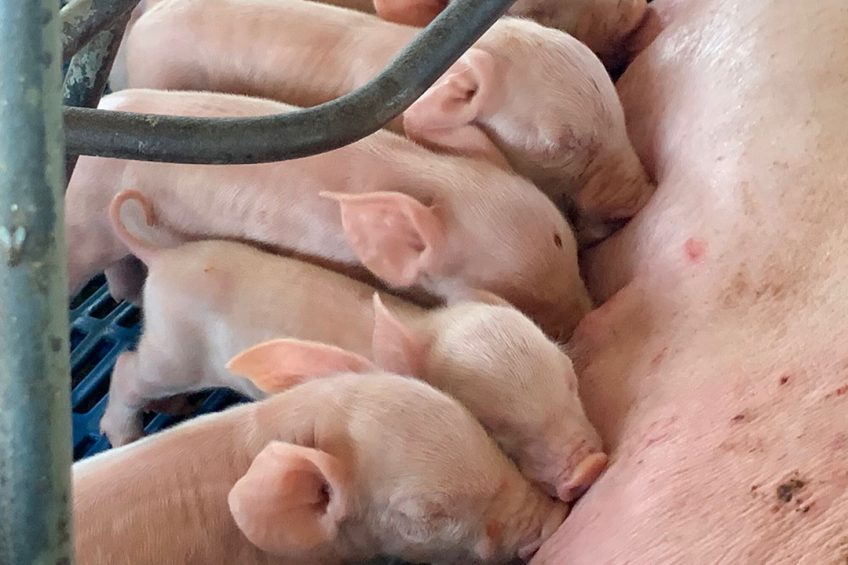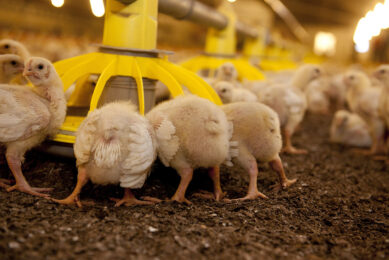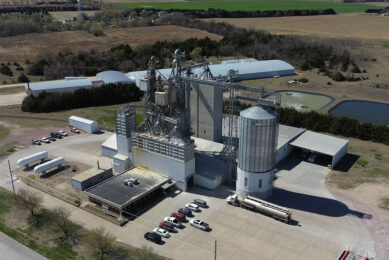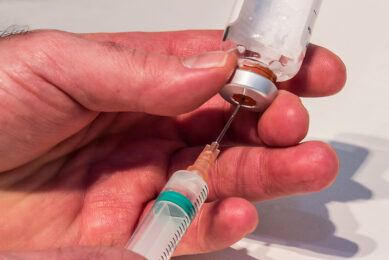Antibiotic reduction inside and outside Brazilian farms

Many countries around the globe are implementing a policy for antibiotic reduction. Especially when larger countries manage to curb use substantially, it makes a big difference. Where is Brazil in this process?
The use of antibiotic growth promoters in Brazil’s pig sector has led to an increase in regulations and awareness programmes, especially in the last 2 decades. Yet there is still a long way to go to achieve total prohibition and zero application of these practices among farmers.
Complex task for Brazilian swine producers
The topic is complex because, for many years, the continuous use of antibiotics had been one of the main tools to prevent diseases and enhance performance, and a large portion of swine producers would need to change their entire business model if antibiotics were to be phased out.
Nevertheless, Brazil’s producers aim to adhere to all guidelines laid out by the World Organization for Animal Health (OIE), as well as observe the demands from buyers both domestically and abroad. The country has been progressing to meet the highest and newest standards in this area.
There are 2 paths to do so, and both are occurring simultaneously:
- Outside the pig farms – through the role played by the Brazilian Ministry of Agriculture, Livestock and Food Supply (MAPA) and the Brazilian Association of Pig Producers (ABCS).
- Within the pig farms – with producers, in a country that is larger than the entire European continent (Russia not included).
The current national status is still in transition, but we have effective actions that can really have results at a national level. Brazil’s pig industry already includes many farms that have replaced their practices and have good rates of productivity.
Preserving antibiotic effectiveness
MAPA and ABCS are committed to promoting the rational use of antibiotic products, by preparing farmers and raising their awareness about the “One Health” concept, which emphasises the link between human and animal health with regards to antimicrobial resistance.
Suzana Bresslau, chief of the MAPA’s veterinary medicines division, argues that antibiotics are a global public good, and preserving their effectiveness is crucial to minimise the impacts of antimicrobial resistance, which is currently one of the most important world public health problems.
She says, “The responsible usage of antimicrobials in animals follows strict rules in Brazil, and it is also worth noting the recommendations of the OIE on discontinuation of antibiotics for improving animal performance that are of medical importance.”
Outside the farm
The MAPA has pushed for:
- Veterinarian prescription only when it is necessary
- Respect for prescribed dosage, treatment and withdrawal periods
- Registered antimicrobials and distributors
- Good management, vaccination and hygiene practices
According to Bresslau, since 1998, Brazil has been progressively banning the use of several substances or classes of antimicrobials as performance-enhancing additives for animals (see table).
In addition, MAPA, in cooperation with sector representatives, has set out a National Action Plan for the Prevention and Control of Antimicrobial Resistance in 2018.
That statement highlights several guidelines to practices such as:
- Rational use of antimicrobials
- The strengthening of good practices
- Sanitary and biosafety management
- Control of infections in animal health
Moreover, the plan aims to foster continued training for animal health professionals, encourage the development of preventive protocols, monitor antibiotic usage, establish regulatory strategies and update current legislation regarding the advertising of veterinary antimicrobials.
Bresslau explains, “Those activities also involve producers, especially regarding reducing the need for antimicrobials in animals, by strengthening good practices and promoting the implementation of sanitary and biosecurity management to prevent and control infections in animal health.”
Actors in the animal protein chain
Different actors in the animal protein production chain are involved, for instance the Federal Council of Veterinary Medicine and ABCS. Charli Ludtke, technical director at ABCS, says, “We are working together with producers and MAPA to make this transition in the short, medium and long term and achieve the plan’s objectives.”
She emphasises awareness and understanding on the subject among farmers and other entities through communication, education and training to reduce the incidence of infections as the first step to increasingly optimise the use of antimicrobials.
In line with the National Action Plan, the first cycle of “structuring activities” has been developed since 2018; this initiative will be finished by 2022. The agenda includes lectures, online courses, webinars and development of the manual Rational Use of Antibiotics, Biosafety and Animal Welfare: A Vision Applied to Swine, which will be launched in the course of 2021.
Ludtke adds, “The publication will bring specific protocols for responsible usage of antimicrobials in swine farming, as well as alternatives such as eubiotic substitutes (organic acids, probiotics, prebiotics, essential oils, minerals and others), vaccination plans, improvement of animal welfare inside farms and biosecurity.”
ABCS understands the issue requires an integrative approach that implies working together with all players in the sector. She concludes, “The current national status is still in transition, but we have effective actions that can really have results at a national level. Brazil’s pig industry already includes many farms that have replaced their practices and have good rates of productivity.”
Inside the pig houses
Researcher Mauricio Dutra wrote his PhD thesis on antimicrobial use in swine production. One part of the study was presented in 2019 and includes data from all over the world as well as field research in Brazilian farms in 2017.
From the 18,100 farms in the country, the research included 25 farms and evaluated the use of 11 types of antibiotics per animal weight group. The results shows an average of 358.4µg/kg of live pig. The smallest number was 5.4µg and the highest 585.6µg. In other words, there are extremely different realities regarding practices inside pig houses.
Dutra comments, “The study shows that systems with up to 172µg/kg have higher production per sow per year. These ones achieved above 3.2 tonnes of meat per sow, while ones that use more than 344µg achieve just 2.7 tonnes. In other words, productiveness depends on whole systems, not exclusively on antibiotics.”
Among the 25 most productive systems, 72% do use and 28% do not use antimicrobials preventively at nursery phase in the piglets. The most often used molecules, for example, are ceftiofur (40%), amoxicillin (24%) and gentamicin (16%). The field research also pointed to increased microbial resistance, as 80% of those farms were positive for methicillin-resistant Staphylococcus aureus (MRSA).
Dutra adds, “There is a scientific consensus about effective alternatives for producers, instead of increasing antimicrobial usage. A group of 111 experts from Belgium, Denmark, France, Germany, Sweden and Switzerland created a checklist, and the top 3 priorities are internal biosecurity, vaccination protocol and feeding.”
A global picture
Interestingly, Dutra’s data also takes a look across the borders. In 2015, the world’s total animal consumption of feed reached 960 million tonnes, while antibiotic usage reached 63,500 tonnes. The breakdown of those figures can be seen in Table 1.
Quoting other authors, Dutra’s study projects that by 2030, a global average of 172µg/kg of live animal will be reached.
Finally, the main consumers will be:
- China (30,000 tonnes)
- US (10,000 tonnes)
- Brazil (8,500 tonnes)
- India (4,200 tonnes)
- Mexico (2,100 tonnes)
- With the greatest percentage increases taking place in Africa and Asia.











